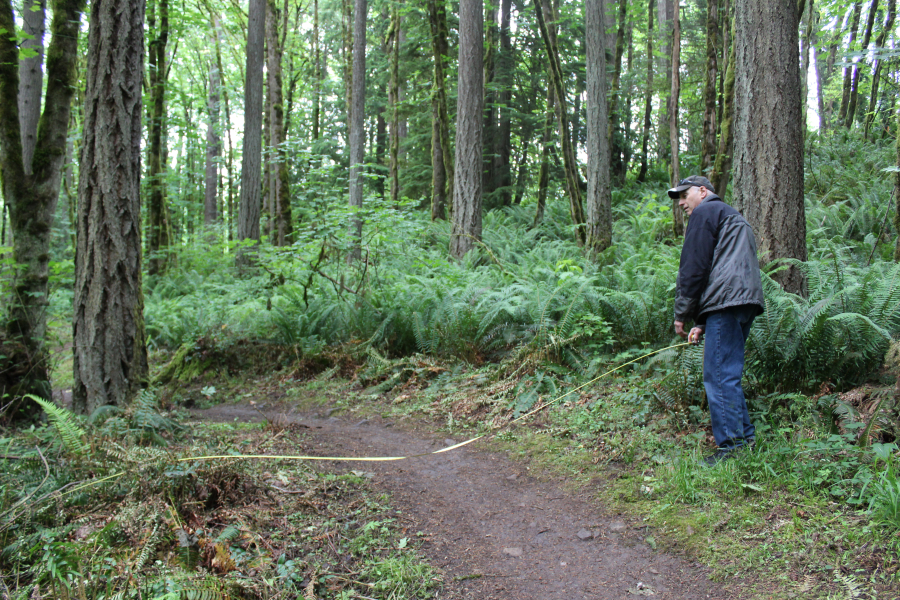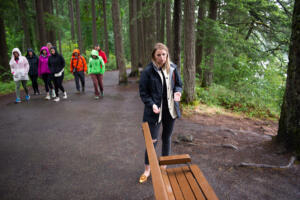Jim Hart is on a mission to find hacked-up ferns inside Lacamas Lake Regional Park.
It’s drizzling and the trail is a bit muddy, but Hart, an avid hiker and lifelong Camas-Washougal resident who raised four children here, isn’t fazed. Coffee mug in hand and raincoat on, Hart strides through a field of overgrown grass to find a small trailhead in the park’s farthest northeastern corner.
For the first few yards, the trail is a narrow band of dirt winding its way through a lush landscape of sword and bracken ferns. But about 100 feet into the hike, the trail opens up and Hart points to ferns on either side of the trail that have recently been mowed down by some sort of weed whacker.
Hart puts his coffee cup down and pulls a measuring tape from his pocket. He measures from the middle of the trail to a fern off one side.
“It’s nine feet from the trail!” Hart exclaims, shaking his head. “Why did they need to cut it back so far?”





